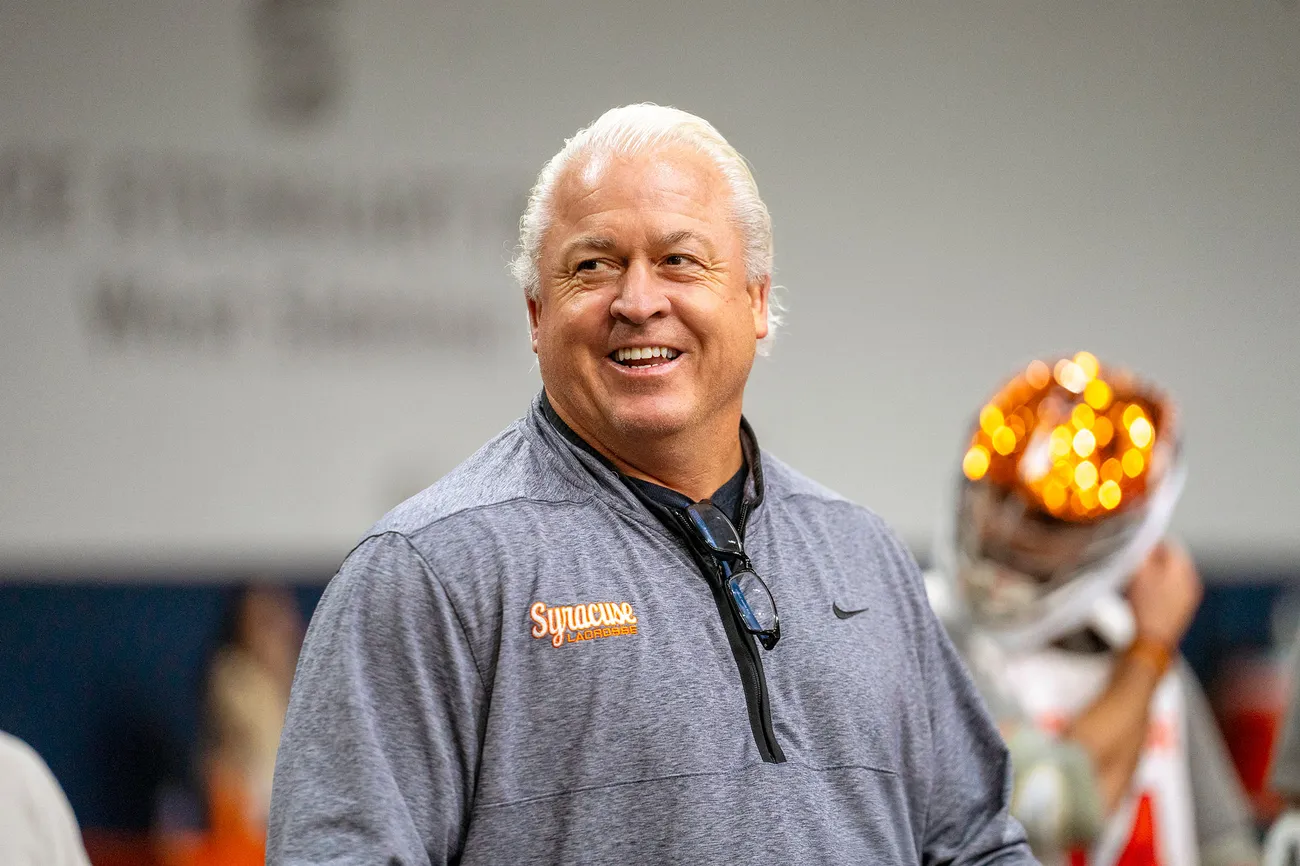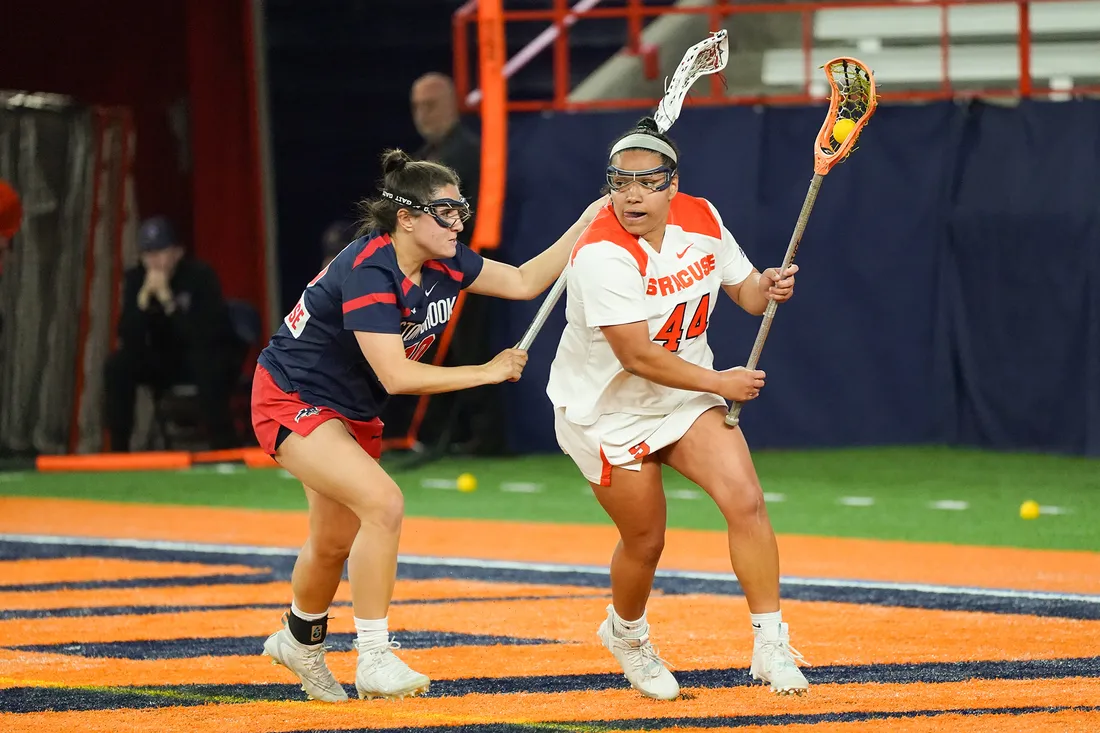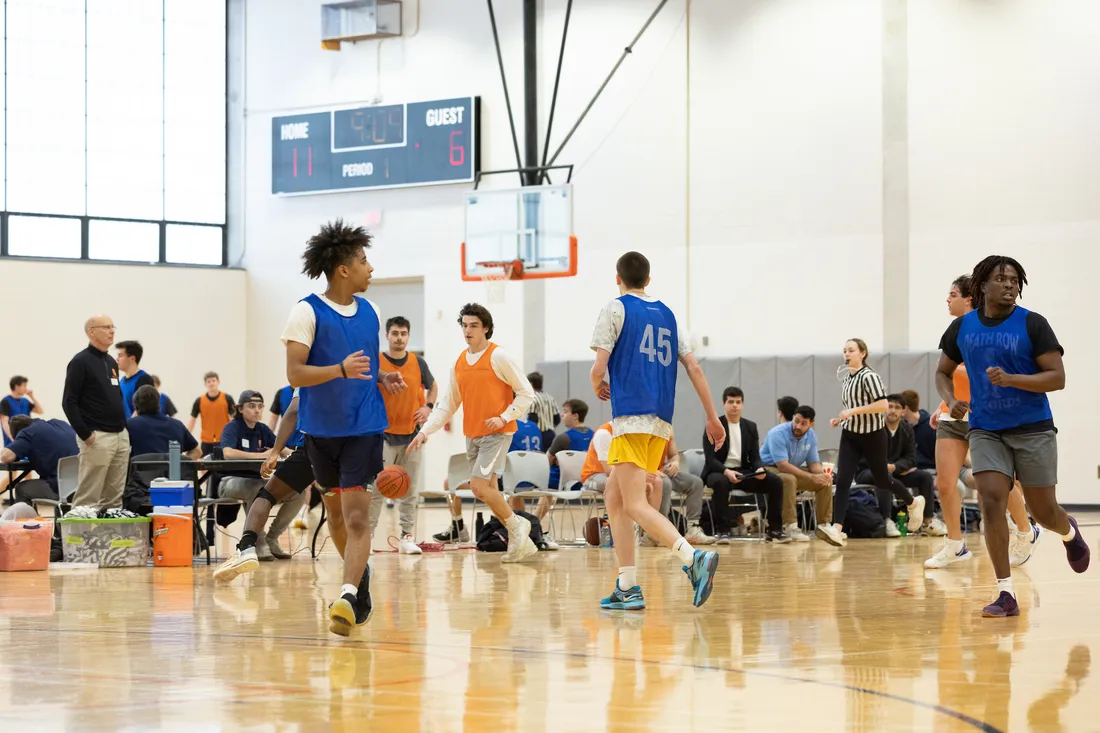Gary Gait ’90 is a 10-time NCAA champion, but the lacrosse player-turned-coach admits that he’s still learning how to win.
“The challenge is performing well under pressure,” says Gait, who won three national titles as a Syracuse midfielder and seven as an assistant coach with the University of Maryland’s women’s lacrosse program.
The Roy D. Simmons Jr. Head Men’s Lacrosse Coach, Gait recently led the Orange to victory in Utah at more than 4,000 feet above sea level—a feat of respiratory strength. “I remind my players to focus on the present without judgement,” he adds.
Gait, 57, is currently working from a slightly different playbook—one that encourages his student-athletes to succeed while deriving satisfaction along the way.
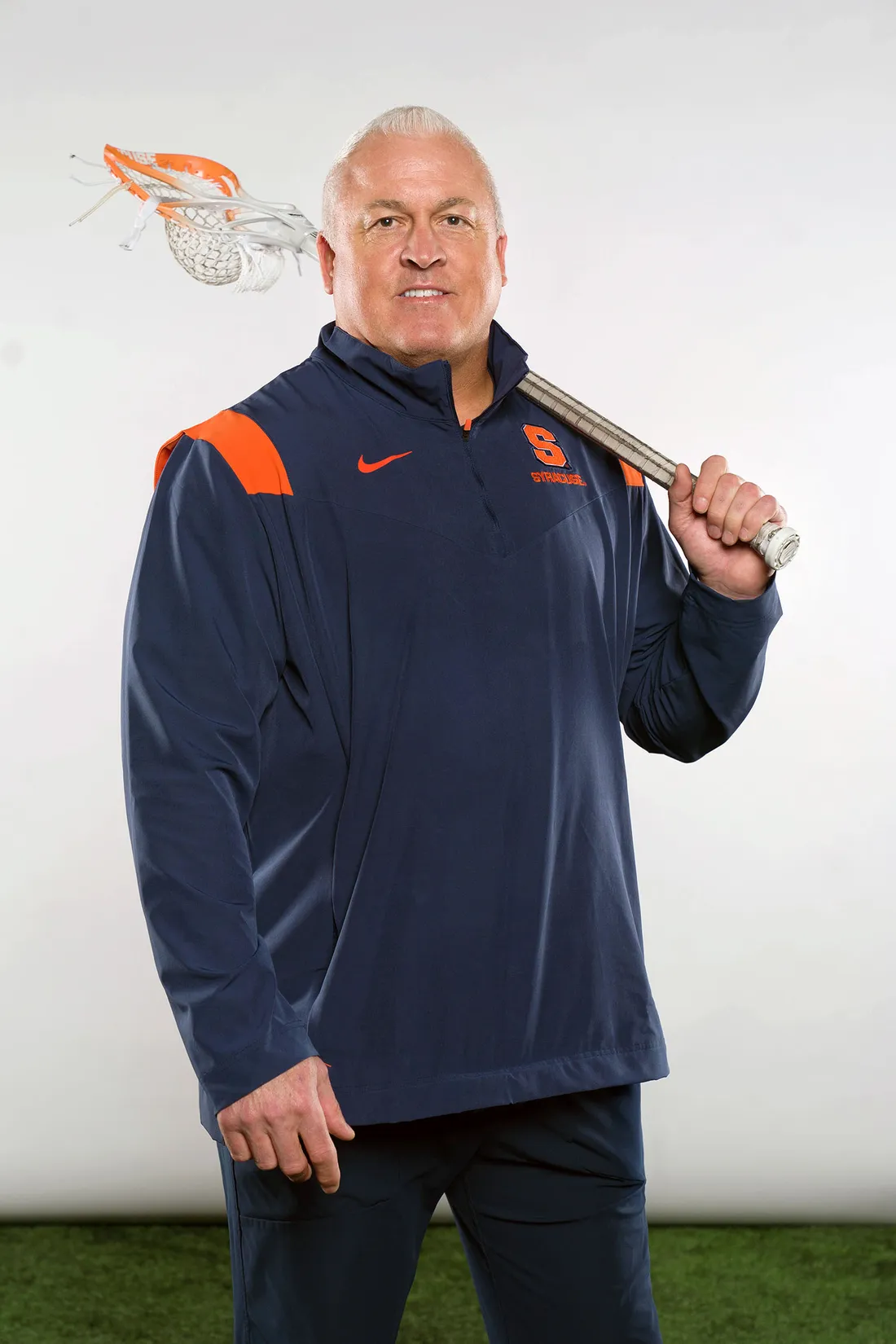
Gary Gait ’90 is Syracuse’s Roy D. Simmons Jr. Head Men’s Lacrosse Coach. He coached Orange women’s lacrosse for 14 seasons before taking over the men’s program in 2021.
Strategies for managing pressure, maintaining focus and optimizing performance are just as important, he explains, as those used to create turnovers and scoring opportunities.
“I truly believe that we can advance our game through mental training,” says Gait, a three-time All American and two-time NCAA Player of the Year. “I call it ‘staying in the flow.’”
The retired Hall of Famer utilizes the services of Greg Shelley, a nationally renowned expert on sports psychology and leadership at Cornell University. He provides, among other things, performance enhancement and mental skills training to Gait’s players and staff.
“The result is a positive team culture where everyone counts,” says Gait, who’s worked with other sports psychologists during his three-decade coaching career. “This entails being aware of our thoughts, feelings and surroundings on and off the field.”
While Gait practiced mindfulness training as a player, he hasn’t openly embraced it as a coach until recently.
Credit Arman “Dr. T” Taghizadeh, a sports psychiatrist at Johns Hopkins, for helping transform Syracuse’s women’s lacrosse into a national powerhouse. Gait, who coached the program from 2008-21, says Dr. T “had a lot to do with” its eight Final Four appearances and three NCAA Championship games.
Since inheriting the men’s program from head coach John Desko ’79 in 2021, Gait has been driven to replicate—if not, surpass—his own success. “I have a lot to prove,” he says smiling.
The Inner Game of Lacrosse
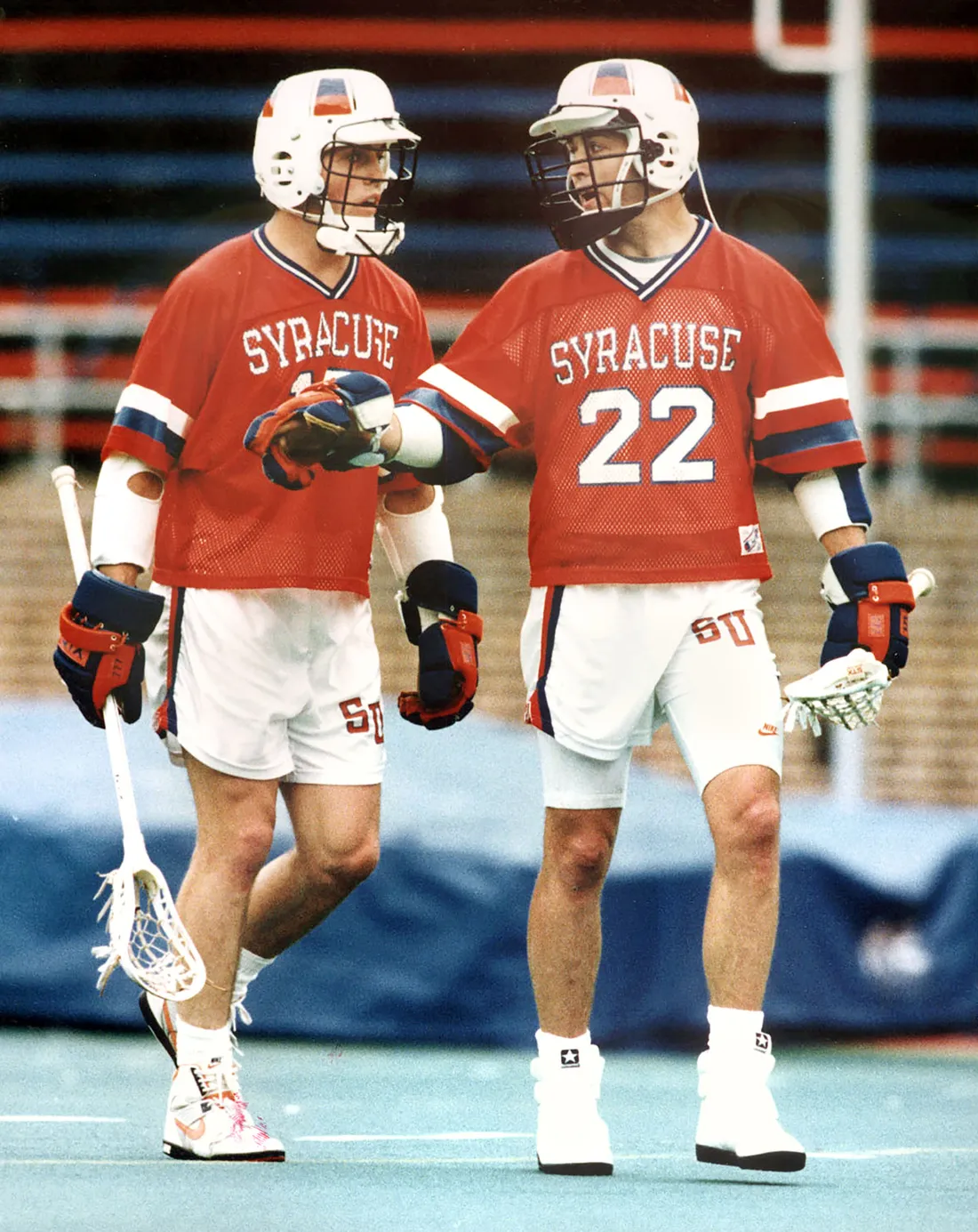
Gait (right) with his twin brother, Paul ’90. Their jerseys hang in the rafters of the JMA Wireless Dome.
Gait’s interest in the inner game of sport began in western Canada, where he and his twin brother, Paul ’90, fell under the spell of Ron “Groucho” MacNeil, the all-time leading scorer in Canadian box lacrosse and inventor of the plastic lacrosse stick.
The Gaits were only four years old when they first picked up lacrosse sticks. Their dad coached them for several years before eliciting the services of MacNeil.
“Ron MacNeil changed everything,” says Gait, who, along with Paul, played lacrosse with another set of twins on their block—Greg and Grant Pepper—who were three weeks younger. “It was like a light bulb went off.”
In addition to basic lacrosse skills (e.g., cradling, scooping, throwing and catching), MacNeil taught the Gaits interval training and nasal breathing techniques. He also introduced them to meditation and creative visualization, which boosted their emotional resilience and split-second decision making.
“Ron MacNeil was way ahead of his time,” Gait observes. “He gave us a nonreactive mindset that helped us let go of mistakes.”

Gait is proud to lead his alma mater, where he prioritizes mental health among his players and coaching staff.
Gait’s interest in mental training continued at Syracuse, where he found a receptive audience in head coach Roy Simmons ’59, H’14. One of the winningest lacrosse coaches of all time, Simmons famously adapted his style to suit Gary’s and Paul’s innovative, up-tempo play. The Orange lost only one game in three seasons between 1988-90.
“Coach Simmons showed me how to become a disrupter and an innovator,” says Gait, whose men’s program has cinched 11 national titles. “Being back at Syracuse helps me make good on that promise to him.”
In It Together
Volumes have been written about Gait, who has stamped his legacy on the sport. “He’s the Michael Jordan of lacrosse,” gushes Orange Director of Athletics John Wildhack ’80.
Yet, any conversation with or about him often veers toward his brother, who’s equally prolific.
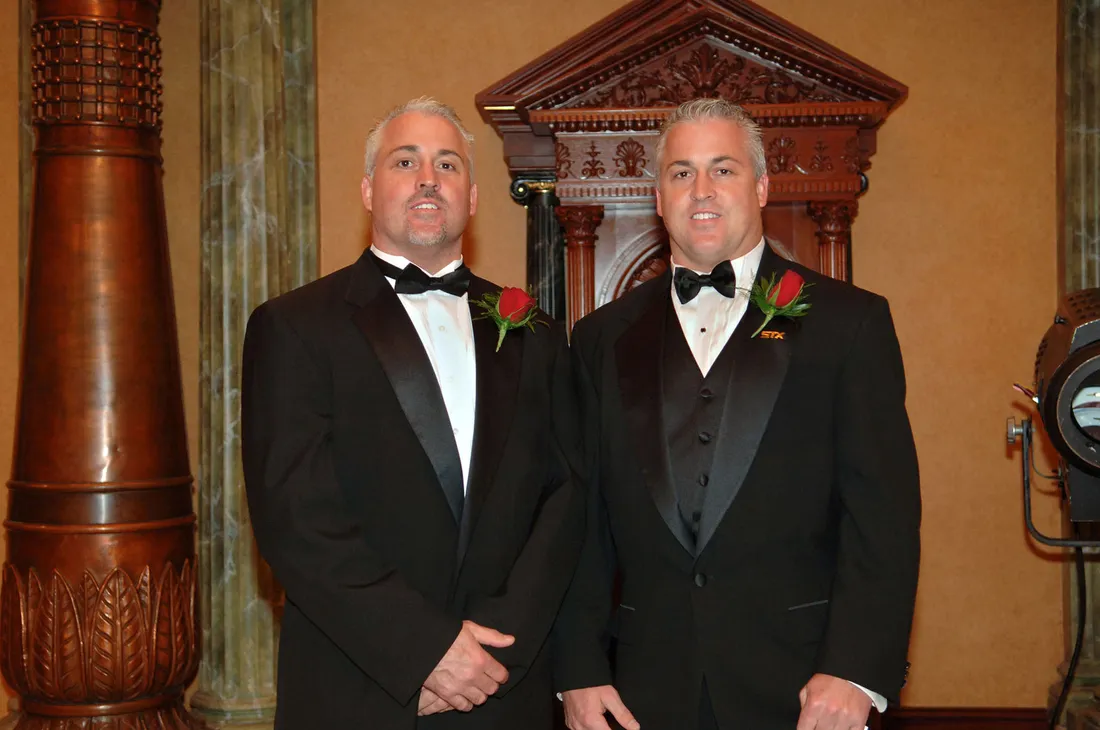
“He’s my hero,” says Gary (right) of Paul, who became paralyzed from the waist down after falling in their company warehouse in 2022.
While their jerseys hang from the rafters of the JMA Wireless Dome, it’s hard to believe that the Gaits didn’t find out about Syracuse until late in their scholastic careers.
As the story goes, the coach of the Canadian National Men’s Lacrosse Team (which the brothers unsuccessfully tried out for) told Simmons to give them a look. “He contacted us, and that was the first time we had ever heard of Syracuse,” Gait remembers. The rest is the stuff of legend.
Gary and Paul were like a two-headed monster—their strong, fluid playing as fast as it was daring. They often confounded opponents with behind-the-back passing and shooting, which were practically unheard of in the late ’80s.
Then there’s “Air Gait,” where Gait famously jumped from behind the net to score a goal in midair. It was lacrosse’s “Big Bang” moment, the “shot that was heard around the world,” says Desko of the 1988 play. The move was so effective, so insane—and so heavily imitated—that the NCAA banned it.
“They were the greatest players I ever coached,” Simmons has been quoted as saying.
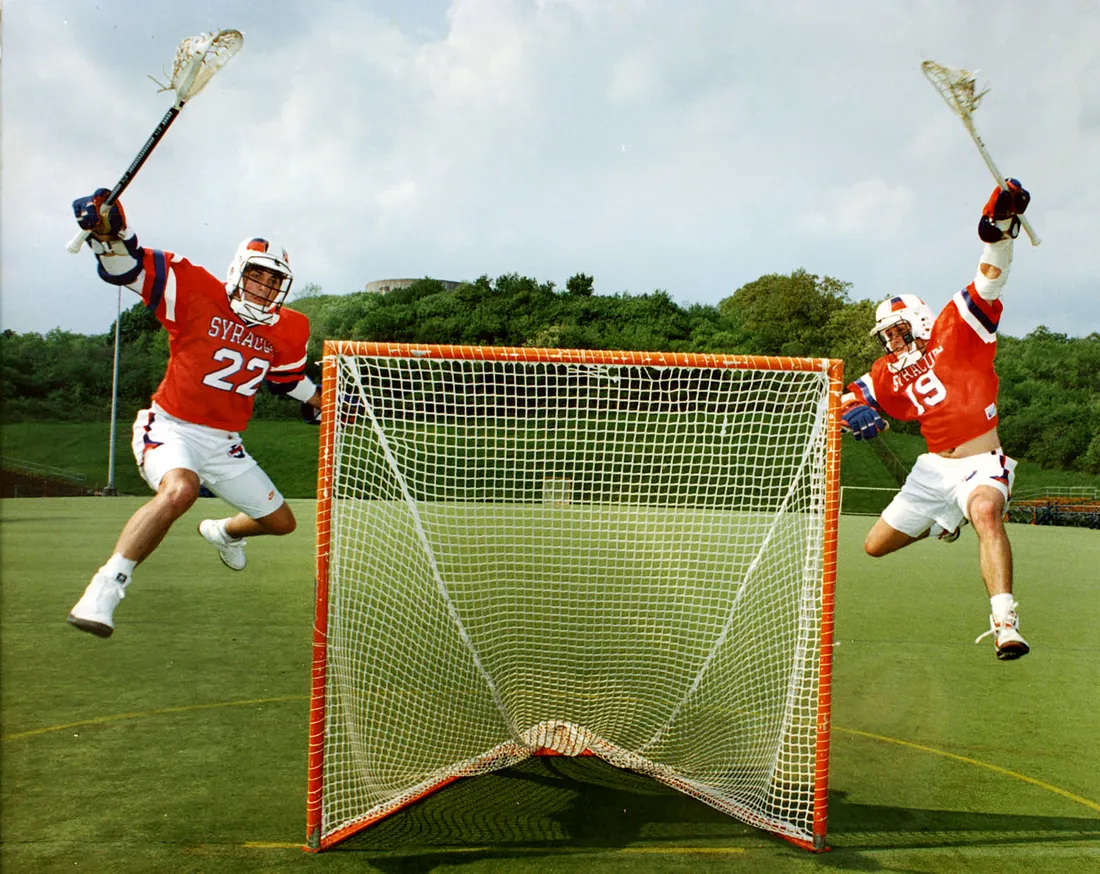
The Gaits are widely considered among the greatest lacrosse players of all time. “We still motivate each other,” says Gary (left).
Gait went on to play and coach professionally while co-running Gait Lacrosse, a leading marketer and manufacturer of men’s lacrosse equipment that Paul founded.
Tragedy struck in 2022, when Paul became paralyzed from the waist down after falling in the company’s warehouse. “He’s my hero,” says Gait, 57, with a trace of emotion. “So brave and mentally tough.”
More than business partners and former teammates, the Gaits are brothers to the end. And if they learned anything from MacNeil more than 50 years ago, it’s that loyalty is a state of mind extending far beyond the field.
“Paul and I still motivate each other,” Gait says. “Our success comes from not dwelling on the past, but from focusing on the present. We’re in it together.”

